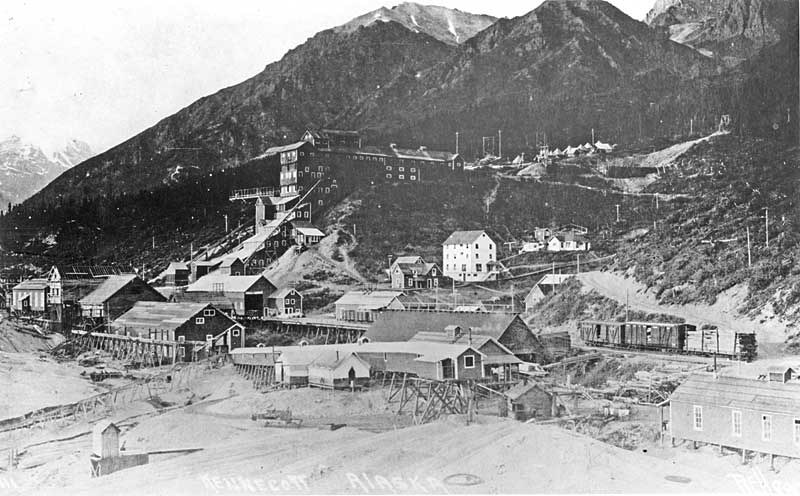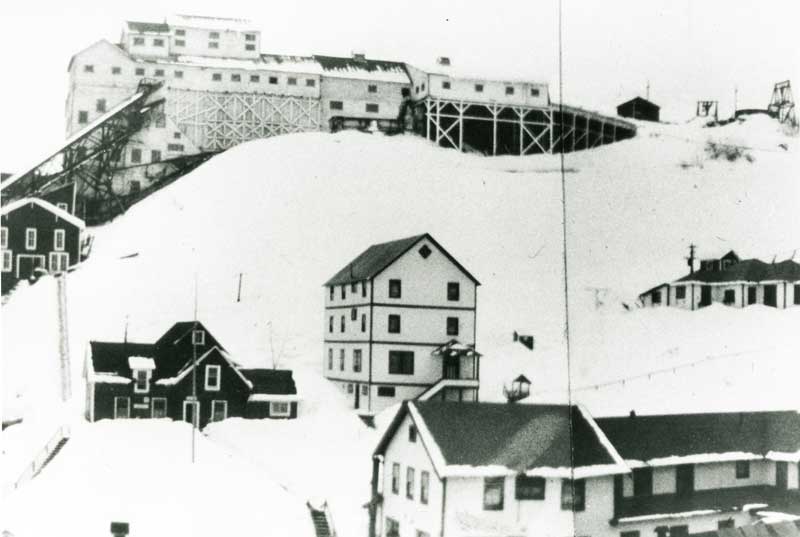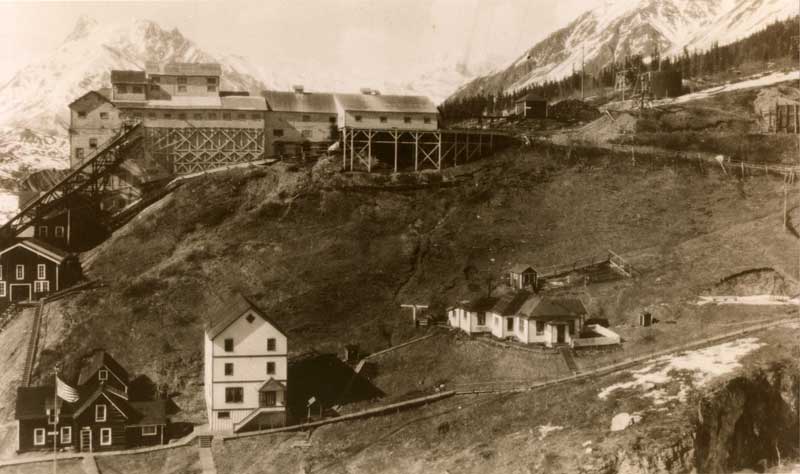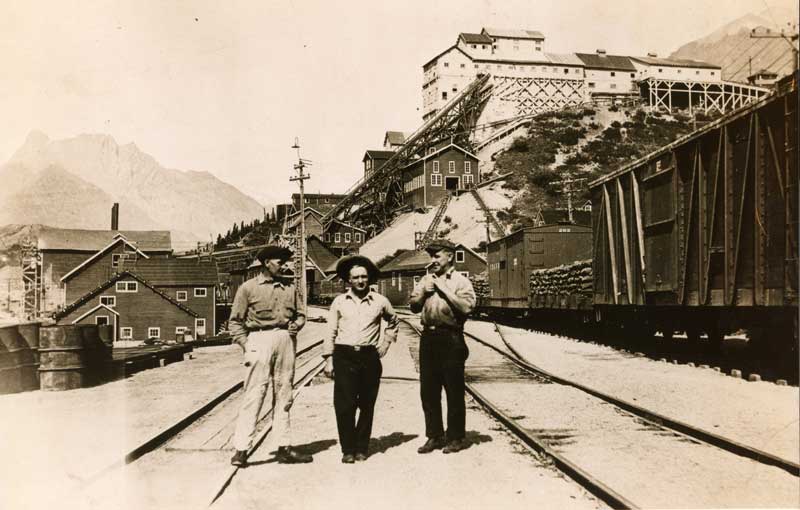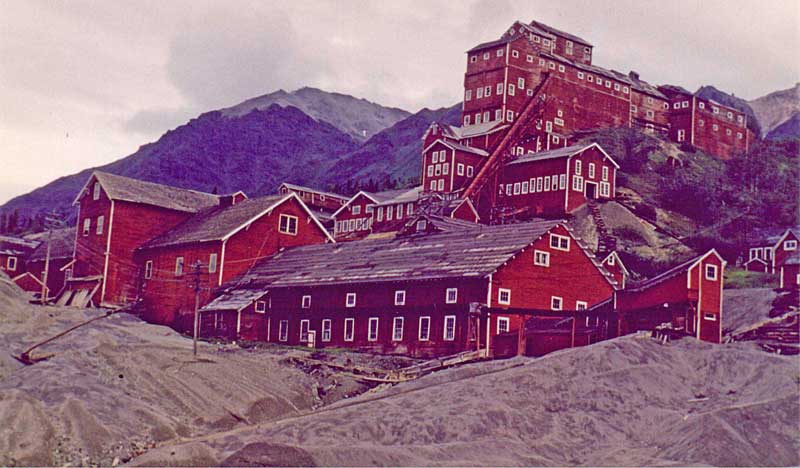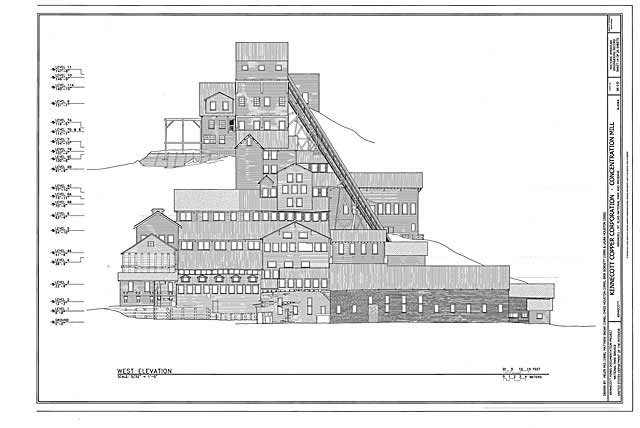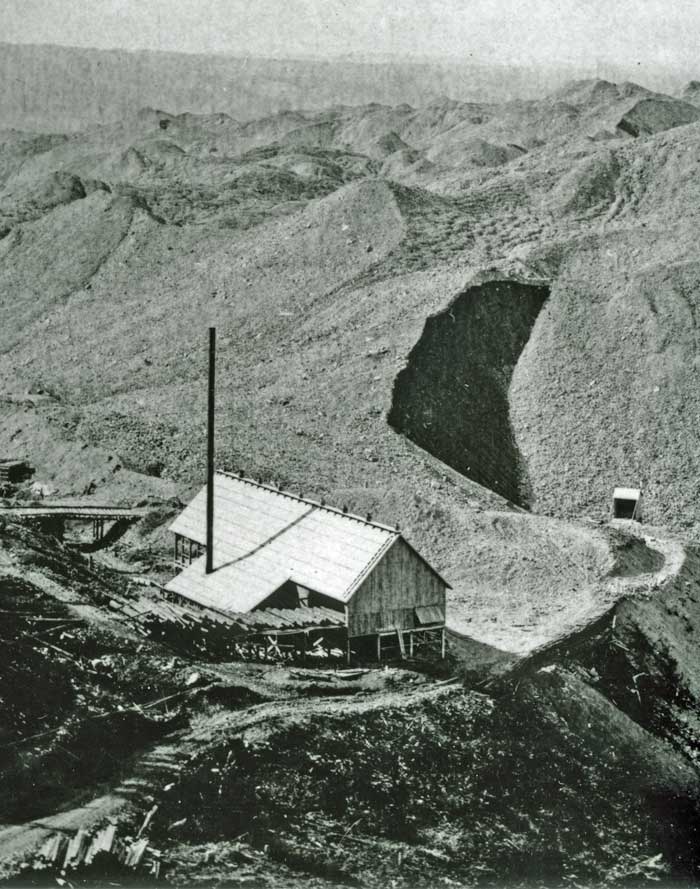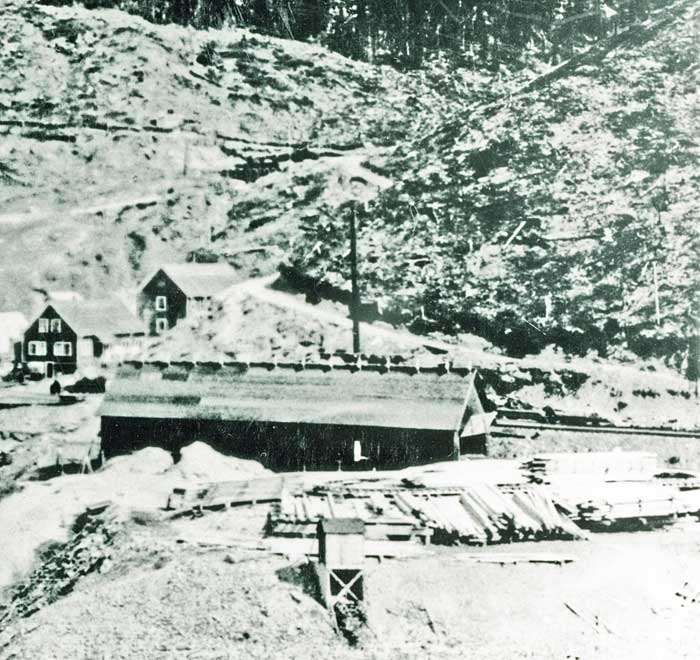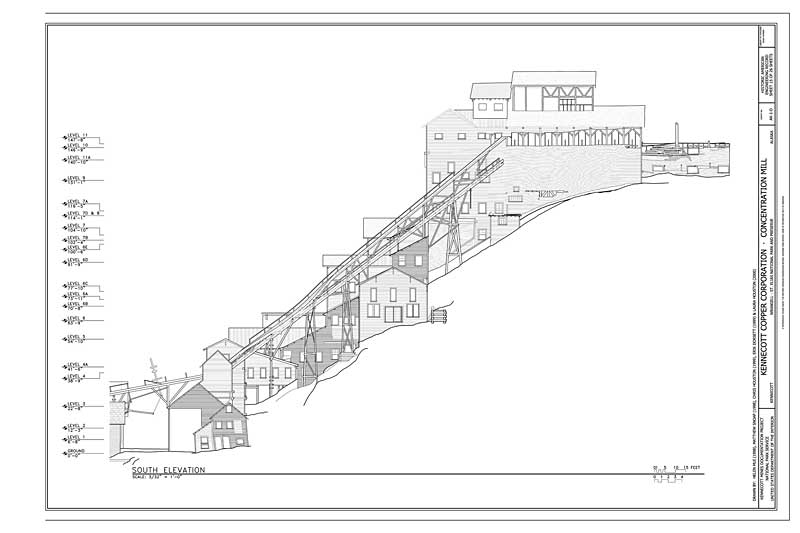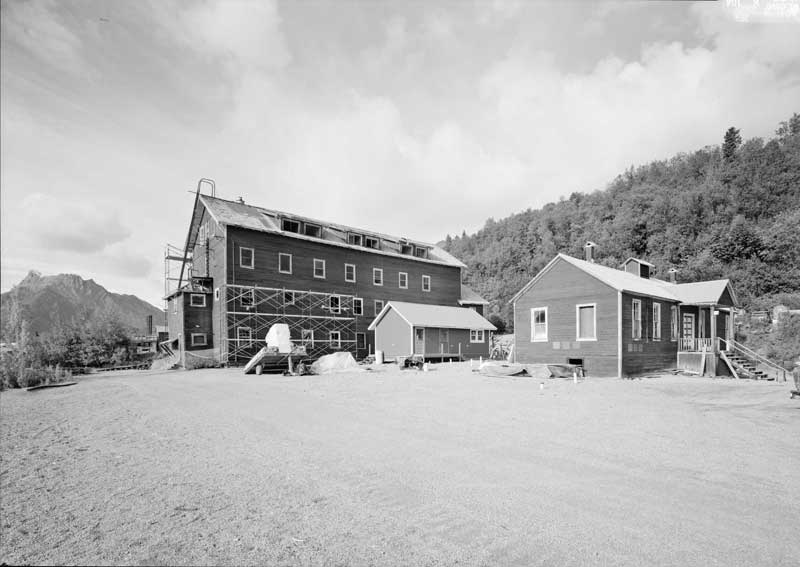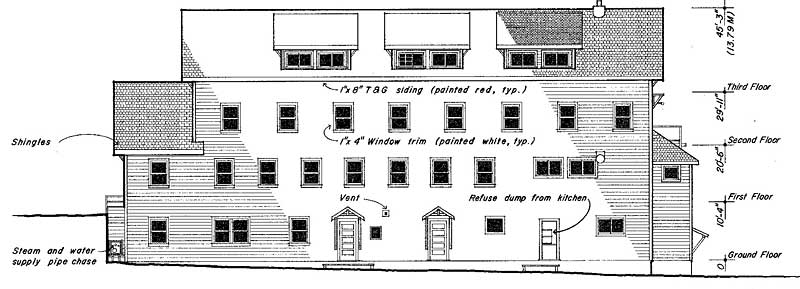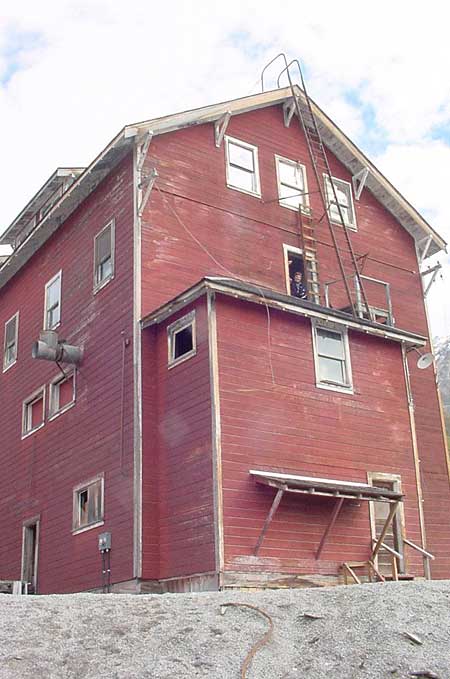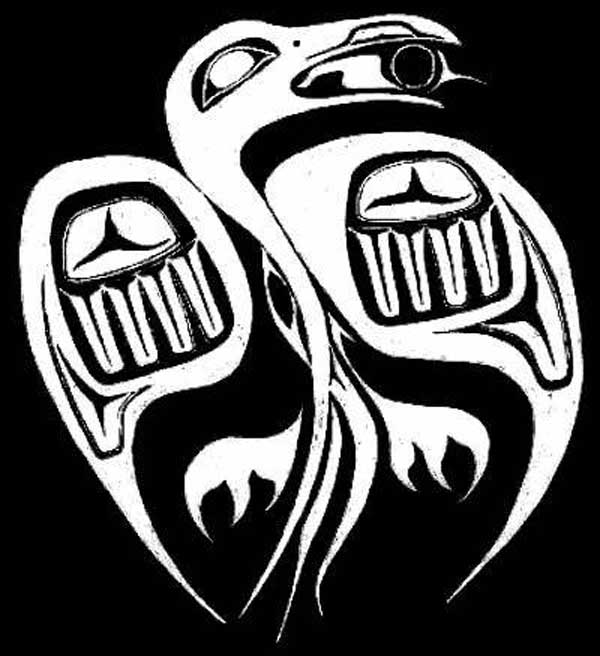Deputy Marshal Paddy McMahon stood on the high point of the scaffold, just above the mill elevator cap, with Bill Douglass and Walter Richelsen. “It certainly was quite a fall from way up here.” McMahon peered over the west wall to see for himself, then shuddered. “I see you’ve already examined the pulley system here, and you’ve concluded the cut is a deliberate one.” “Yes, I was the first to inspect this pulley system. No doubt in my mind that the cut is purposeful.” “Unfortunately, Mr. Douglass, that’s not good enough. It could be deliberate, then maybe not. You or one of your men could have just as well have done this. Even if it is what you say it is, there is no way to tie it to the suspects. I’ve already interviewed the men who were up here at the time. No one was ever threatened verbally or otherwise. Nothing was seen which ties any of your suspects to this rope break. And I have no admissions from any one of the five suspects. I’ll have to let them go. I’m officially concluding that this incident was an accident. I’ll mail you my report from the Valdez office.” Douglass and Walter Richelsen looked at the deputy marshal in disbelief. There was little doubt in any one’s mind that this was no accident. The impression both men got was that McMahon was only too eager to close the case. The deputy marshal, who also served as the coroner, walked down the scaffold ramp, leaving the engineers behind, as he headed back to his speeder. An hour later the five men were released from their cell in Cordova.
“Well, that’s that,” concluded Bill Douglass. “It’s time to resume this paint work. There is nothing more which can be done here. Now I’ll have to report this as an accident to the main office. They won’t be to happy about that. Then there’s the matter of all those men who feel wronged by the death of Henry Jackson, including the two Chitina Indians who seem to think that they were the intended targets. I’m wondering if I shouldn’t just send them back to Chitina.” “Let me assess the situation, Bill. That may not be a good enough reason to remove those two.” “Three. One of them is a younger brother.” “All the more reason to proceed with caution. Let me talk with them first and see how they’re going to handle this. Now that the investigation is over, they may just want to leave anyway.” “It’s all yours, Walter. Take Frank with you when you visit them. He knows the two older ones quite well, and has already been down there to visit them. He can give you the best idea as to the state of mind of the three of them.” Walter found Frank up in the map room with Russell Belvedere working on some new drawings. The map room was Frank’s favorite place. “Frank, I need to talk with you about whether to retain the three men we hired for the mill painting crew. Douglass is considering letting them go to prevent problems.” “Why, what happened?” “The deputy marshal just left. He concluded there is no evidence linking those five scoundrels, uh, suspects that is, who ran off the site when the accident occurred. He even implied that one of us might have altered the evidence. The deputy marshal said he’ll release them for lack of evidence.” Frank shook his head in disbelief. “They were all shocked, of course and are completely convinced that the collapse of the platform was a deliberate act aimed at them. However, the two older ones are determined not to let this incident set them back. They want to continue with this job until it is done. Only the mill job. Nothing more. I heard nothing which indicated they blamed anyone else but those five Cordova men. You could talk with them yourself, if you like. But these men work hard and have done quality work. Chris made one of the foreman, and he’s driven the crew hard, running unusually long hours and taking lunch right on the job site. The third one learned quickly and keeps up with the others. Chris told me they require almost no supervision since they started repainting the mill. I think we owe it to them to let them remain through this job.” “You show a great deal of confidence in them, Frank. I want to talk with them personally just to see for myself. Where would they be now? “They’ve been working in the paint shop since the accident, cleaning up everything down there and making improvements to the place, waiting for us to decide when to resume the mill-painting work.” “Good, they should be alone then out of earshot of anyone else if they’re down there. Let’s go check on them, Frank.” Chris and Ole were on the main level of the shop when the two engineers entered. “Chris, how are you doing? The investigation’s over. The coroner has left. Are you ready to resume work up there on the scaffold?” “This is the most horrible accident I’ve ever seen. I was right there, too. But we have accidents here and life goes on. I’m ready to continue. So is Ole and the others. We’re quite sure we didn’t cause it. The failure had to be deliberate. We’ll just have to satisfy ourselves with that, Walter.” “The coroner says otherwise.” “You mean he’s calling it an accident? I examined the pulley and ropes myself, just to make sure it wasn’t us. That rope was deliberately cut. No doubt in my mind about that.” “I agree, but the case is officially closed. We want to get the job finished, of course, but we’re not going to use a platform like the last one. Our engineering staff will draw up plans for a scaffold that will extend all the way up the front west face of the mill. As soon as we have the plans drawn up, we’ll get them to you. Right now we want to interview the three Native painters. What’s your assessment of them, Chris? Are all three of them prepared to continue without causing us problems?”
“Those men were never a problem. The only incident I’m aware of was started by Roger Hyde when he deliberately pushed Charles Gadanski, who is Johnny’s younger brother, off the coach platform.” “I never heard about that incident. Anything more come of it? Any altercation?” “Uh, no Mr. Richelsen, nothing came of it. Nothing at all. There was nothing after that or before it which came to my attention. Those boys are here to do a job. I believe they want to prove the point that they can do at least as good a job as anyone here, if not better. That doesn’t spell trouble to me.” “Thanks, Chris. How about you Ole? Do you have anything to add?” “I don’t know the men well. I’ve just observed them at work. They even take their lunches to the job to save time and get more work done. None of them is an expert painter, but you’d never know. Johnny must have picked up some tricks from his father Emil when Johnny worked here last year. I say keep them on.” Walter and Frank headed over to the open hatch leading into the basement level. Down below Charles watched as the two stepped down the creaking wooden steps. “Johnny, Frank is here.” Johnny stepped forward from a dark, remote area of the large basement. He and Cap were near the far end looking over some paint tools which they had just discovered. “Frank, good to see you.” “Johnny, this is Walter Richelsen, our chief engineer. He is here to ask you some questions.” They shook hands. “I want to see Cap as well, could you call him forward?” “I’m here.” Cap stepped out of the darkness. “First, you should know that the deputy marshal determined that there is not enough evidence to hold the five suspects in the death of Henry Jackson. We’re not happy with that, but this brings the case to an end officially.” He watched for the reactions. The three Indians heard exactly what they expected. The news was no surprise. They revealed no readable expressions. Johnny spoke for the three of them. “This is just what we expected. We’ve long ago learned that your justice is not ours. None of us hold it against any of you personally. We understand. If any of those men were guilty, they will pay anyway, without the law or any of us stepping in. If we weren’t part of the crew, someone would probably have paid for Henry’s death. But once we Indians are mixed in, the law turns strange. It always has. As I said, we don’t blame you for that. It just is. “I know why you came here. You think that now we might be a problem for the company. Probably someone higher up wants to send us home. Maybe even you. We’re not here to make trouble for Kennecott. Even after what has happened we still like it here. We came here to do one job, which is to paint the mill. We want to finish that job and then go back to our hunting this fall. We work together. We quit together. We have discussed this among ourselves at length and I speak for us all.” Cap and Charles nodded, revealing no emotion at all. “Frank, I’m satisfied. Unless Bill Douglass says otherwise, you will all remain on the job until it is done. Are you all quite sure none of you will have problems working those heights after all of this?” “It won’t be easy for any of us. I nearly died up there. Charles never cared for heights from the start. But we need to finish this and we will.” “I can accept that. I am ordering one change, however. We won’t be using a hanging platform. We’ll design a scaffold for the west face that will cover all the levels. That would have been the proper thing to do in the first place. We’ll have a design for the carpenters shortly. “If Douglass gives the go ahead, you’ll probably be able to assist the carpenters in building the new structure, so the mill face can be safely painted. Besides, now we have some extensive roof repair up there, so the carpenters will be up there anyway.”
Walter looked at each of them and at Frank. “Are there any more questions or observations?” Nothing was said. “Very good then. I’m going back to the office to start a design for the scaffold. Thank you men. You’ve done well through all of this. I know it has not been easy. You’re doing better than most would under the circumstances.” Charles decided he needed to add a few words. “That’s because we stick together and depend on each other. It makes us stronger. We are proud to be Indian and proud to be here doing this. We know that we can finish the job. We will do it well. Then we will leave.” Frank smiled at Charles and silently waved at them as he turned and , followed Walter back up the stairs.. The three stood there in the paint shop in silence for some time facing each other in a circle. “I really thought they’d drop us after all that. I still held out hope that the law would do something about Hyde and the others. The spirit of Henry Jackson will not rest well now.” “But the danger has passed, Sla’cheen. We were the targets, but the evil spirit of death found someone else. We must give thanks to Henry’s spirit tonight. It is certain that at least one of us would have died had not Henry been there to take our place.” The men returned to their work in the shop. Tomorrow they would go back to the mill and complete the job they had started. Less than a month later the mill would have a brand-new look as a light gray building with dark green trim from the eighth level to the fourteenth. For the next five years, until a new superintendent finally replaced the great Bill Douglass, the mill would remain gray, in sharp contrast to the red buildings around it. The light gray would serve as a reminder to all who had been there of the unfortunate and unnecessary death of a well-loved yard crew foreman--the unintended victim of a criminal act. In the early 1930s a new manager looked at the mill and decided it appeared distinctly out of place with its light gray color. The new manager, would not last long. He was a victim of suicide a few months after he left camp, but this unnamed man’s single obvious accomplishment was restoring the mill to its original color, and erasing with it the memories of what had happened there only a few years before. In 1937, the last full year of its operation, the mill was repainted one last time, in startlingly sharp red with bright white trim, much as a corpse gets a fresh make-over before the coffin lid is closed. For all those who were there at the time, the memory of the days when the mill was painted light gray would remain as one of the most fascinating and endearing of times of old Kennecott. For the gray-painted mill was the distinctive work of three proud and unforgettable Ahtna Indians. These were the only Natives who would ever work at historic Kennecott--three young men whose lives and spiritual beings were forever intertwined with Kennecott Copper and its Copper River and Northwestern Railway.
|
Chapters from the historic novel "Legacy of the Chief," by Ronald Simpson, and other items mostly related to the historic background of the Ahtnas in the context of Kennecott Copper & its Copper River & Northwestern Railway.
10 February 2011
Chapter 42: "The Indians Paint the Mill Gray"
09 February 2011
Chapter 41: "Henry Takes the Plunge"
“This north wall took too long for the three of us to paint, and this is the easy wall. ” Johnny voiced his frustration to Cap and Charles as they sat on the upper level of the scaffold eating lunch. Since the painting began, Johnny decided it would save time to bring lunch to work. The Indians always packed lunches which they took with them after a very early breakfast in the mess hall. “But, at least it’s done, Soon-ga. It sure has a nice clean look, even if it took two weeks. It does look a little odd, though. Everything else is red.” “I failed to account for all the window trim work and all that outside bracing we had to work around. There’s a huge amount of it. They should have sheathed it all in before we ever started this job. It would have saved a lot of work. What an annoyance!”
“There’s even more of it on the south side, Sla’cheen.” “You didn’t have to remind me of that, Cap. “It took two coats of light gray to cover the dark red underneath. I didn’t figure that in, either. This job is quite different in some ways than that power plant job from last year. But now that it has its second coating, it sure looks good now.” “I have to wash the paint out of my hair every night, Soon-ga. Good thing the store has baby oil.” “We use a lot of it, don’t we? They must really wonder about us in there. I told them they’d better order more of it. The stuff does the job, though. Gets all that oil paint out. Makes the shower stalls messy, though.” “The only way I could keep the peace was to agree that we wouldn’t use the area until everyone else had. The others sure don’t like to clean up with our gray paint splashed all over the place. Must keep the Japanese cleaning crew busy.” “Good thing Roger Hyde and his bunch moved. What trouble makers.” “Yes, Cap. It’s been a whole lot better since Henry moved them to the east barrack. I was turning into a real mess. Good old Henry.” Johnny looked east, letting his eyes examine the entire length of the wall.
“Everything on the east end is done. We’ll start on the very top area today around the conveyor head and the elevator cap. We should have that and those three cupolas east of the conveyor head done in another three days. Then we can move to the front section we’ve been avoiding.” “You really trust that rigging, Johnny?” “It looks good. Maybe Cap and I will take time to give it a dry run today. I just need you, Charles, and one other. We could use Henry for that.” “I’m relieved that those five Cordova men have been working away from us down by the hospital.” “Yes, Cap. The farther away from us the better. I still have a tough time sleeping at night. You never seem to have that problem.” “The danger’s still out there. We need to stay on alert. I know it’s not easy to stay this way for so long. On the other hand, it’s kept us out of trouble and we’ve stayed together. How’s it been for you, kid?” “One thing about having an enemy so close is that we’ve been more together and more like the Indians we were taught to be by grandfather. I feel the danger out there somewhere too. Since this started we’ve hardly even talked to anyone else -- except Henry and the boss, Mr. Jensen. I’ve felt more like a true Native out here than I have since grandfather passed on. It’s been worth it for me. You sla’cheen have given me a good experience here.” “I hope we can keep it that way.” Cap looked up and noticed the lone Raven flying overhead. Then another and another. “They’re starting to gather. We need to stay ready and stay close together. Keep away from those others down there as much as possible. All of them.” Johnny and Charles both nodded, for they could read the signs
The three were on the highest level painting when Johnny spotted Henry coming up the scaffold. Henry reached him at the top of the west face, right where the two rigs for lowering and raising the thirty-foot-long platform were located. The platform was very basic. It consisted of two planks on the floor with double hand rails all around it The platform was hanging over the edge at the very top, having been recently tested by the carpenters and then pulled back up to the loading level. “Henry, you came at the right time. We’re about ready to start working our way down this west face wall on the new platform. I want to test it.” “That’s why I came up here. When do you expect to start scraping and painting on this section?” “Two more days and we’ll be done up here on the roof. Then we want to tackle this five-level job, working from the top down. The building front is only 34 feet wide and presents no obvious problems all the way down as long as the rigging works as intended.” “I want to try the platform myself, Johnny, before you guys do. Chris should be up here in a moment with his new assistant carpenter, Ole Oleson.” Chris Jensen personally oversaw the building of this contraption, and Ole helped build it. So they want to test it again with us. I’ll do the first dry run.” By this time, Charles had worked his way down to the rigging area from back of the roof near the cupolas. He was followed closely by Cap. “Ole Oleson. What kind of a name is that?” “Some of those Scandinavian names sound kind of funny. I’m sure Ole’s gotten more than his share of ribbing over that name, but he’s a good guy. The carpenter shop has always been Norwegian. Management likes them there, just like they prefer the Japanese for the cook and waiter jobs. Speaking of that, there they come now.” “I’ll go down with you on the first run, Henry. After all, there’ll be two of us on it when we start using this thing,” Johnny insisted. “Are you sure? I think we need to test it with the weight of just one man first. Then we can add the second. We want to know it works right. What if the line tangles up? What if the platform’s too weak, or too heavy?” Johnny thought about that for a moment. “Henry, your argument makes sense. But I’m still going down with you.” “If you insist. Jensen and Oleson! Good to see you way up here. Thrilling place isn’t it ? Are you here to test this out with a real dummy on it?” “You’re speaking for yourself, of course,” Jensen responded. “Sure, but we all know that. Well now’s as good a time as any.” Cap and Charles had been watching the men working at the new hospital addition where the framing work was beginning to take shape. The workers down there had begun looking up in their direction toward toward the rigging. “It looks like all you do is work this down a little at a time with these double pulleys. Is that all there is to it?” “That’s all it takes. Couldn’t be simpler,” Ole replied. Henry gingerly stepped aboard near the center. The ropes tightened and the platform twisted around a little, then stabilized. “Man, a fellow could really get dizzy on this thing,” he said while smiling the whole time. Henry was probably the last man to get unnerved by any kind of physical danger except perhaps for Cap or Johnny. “Johnny, go ahead and climb on. All of a sudden I don’t feel like I want to be on this thing by myself.” He was still smiling as he moved over to the south end of the narrow platform, pointing Johnny to the north end. Johnny stepped aboard. The four men in front of the elevator cap began lowering the platform in stages. It started out very smoothly, just as planned. Cap and Charles were on the southern pulley while Chris and Ole were on the northern one. Then Cap caught something out of the corner of his eye. The five men at the hospital addition seemed to be backing away. Even from the great distance, he caught the movement. He yelled to the Norwegians. “Up, up, pull the rig up! Johnny, Henry, grab the ropes!” As he yelled the word “grab,” there was a loud snap on his side as the rope went flying by him, leaving him holding a useless rigging. He ran toward the other rigging held by the two Norwegians, trying to reach the rope. Henry was directly below Cap and Charles when the double rope snapped and broke loose. He instinctively reached for the rope which was coming for him, and found himself falling through the air still trying to grasp for the rope. Johnny clutched the rope on his side, just as the platform gave way under him, dumping his partner off the rig. The planking then broke loose heading straight for the roof below, following Henry who was now free-flying toward the first mill roof, four floors below. Johnny grabbed the double rope tightly as it swung around. There was nothing below him, as the entire platform fell away, freeing itself from the one remaining double rope still attached to the overhead rigging. Just above him the four men were working frantically to pull Johnny’s double rope back up. Johnny looked down directly into Henry’s terrified eyes looking back into his as Henry fell rapidly away holding onto a useless rope which was no longer connected to anything. Then Henry struck the top section of roof -- severely buckling the corrugated iron roof. His body bounced wildly off the first steep level, then he hit the second roof, bouncing off it as well and on down -- not stopping until he hurled over the lowest roof -- gaining speed on the rapid series of plunging levels all the way to the ground. Finally, Henry’s body catapulted off the last roof which towered high over track grade, his body twisting through the twenty-five remaining feet of space before landing in a bloody, mangled mass between the railroad tracks. The large planking chased his plunging body all the way down. Both boards collided together then crashed on the ground right over his badly mangled body. Thirteen stories up the four men were completely engaged in saving Johnny. They pulled him as rapidly as humanly possible to the scaffold landing. While the Norwegians continued holding the rope, Cap and Charles grabbed Johnny and pulled him over the top of the platform. Cap stood up and looked down toward rail bed. Several men had already arrived way down there. They were pulling the boards off the body. But Cap could tell from thirteen floors up that Henry was gone. His serene spirit had departed. Cap glanced toward the hospital in time to see the five men heading quickly away from the accident scene, passing the west barracks as they ran south down the tracks. Then Cap collapsed over Johnny and Charles -- mentally and physically exhausted. The two Norwegians, likewise fell over themselves. The men on the roof were completely drained. Overhead the ravens were circling, three of them landing on track grade near the remains of Henry, while the fourth landed on the roof above the three Indians and the two Norwegians. Someone sent word to the tram operators, and both tram bucket lines stopped. The tram tenders ran down the paint platform heading toward the top of the roof at the elevator cap where the five men lay in a state of shock. Johnny was shaking badly, as was his brother Charles. Cap just lay there. The Norwegians were practically beside themselves. All five were helped onto their feet and led one-by-one back down to planking to the tram terminal landing on the rear end of the mill. Someone sent for the superintendent’s truck, which one of the engineers drove up the hill to retrieve the five men for a check-up at the hospital. Though no one on the roof had been injured, the doctor wanted to check on every one of them. There was nothing which could be done for Henry. Superintendent Douglass ordered the mill temporarily shut down. The five men from the roof top were released from the hospital, but Dr. Gillespie ordered all of them to be sent to their rooms. Chris Jensen lived in one of the new cottages on the south end. His wife was summoned to pick him up. Ole Oleson had a room in the west barrack, as did the three Indians. The four men were to be carefully escorted to their rooms. Douglass assigned two of the yard crew men from Henry’s original crew to keep a check on them. Bill Douglass walked down to the hospital to meet with all the men before they were sent home. He found none of them to be particularly communicative, but Cap finally looked straight at him and told him what he needed to hear.
“It was no accident. Those four men you hired from Cordova, it was them. I saw them watch us as we loaded Johnny and Henry on the platform. I was on the rig with Johnny’s brother, and Chris and Ole were on the other rig. When it gave way, those Cordovans ran off from the hospital annex where they were working. The ropes must have been cut on one side. I think they expected Johnny and me to be the first ones on the platform. Those men hate us Indians.” “Thank you for telling me that Cap. I’m sending the three of you back to your rooms for a rest after this. Are you in the all same room?” Cap nodded. “Good. Greg Turner will escort you over there. I’ll have him check on you. If you need anything let us know. No, let me know. I’m going back to the office now to begin dealing with this. I’m very sorry this happened, and we’re all shocked about the loss of Henry, whom we considered one of our own. He will be greatly missed. I guess I don’t need to tell you that.” Johnny finally found the strength to talk. “Is Frank around?” “He’s up at Jumbo. I’ll send for him. I know you and Cap mean a lot to him. He’ll be over there at the barrack when he comes down off the hill.” Douglass grabbed each man’s hand, shaking with each of them, then turned and headed for the office. The stenographer was at her station waiting for Douglass when he walked in the door. “Camille, we’ve had a very bad fatal accident. Except I don’t think it was an accident. Send a telegraph down to McCarthy and see if you can locate the constable, would you? Tell him that the five men we hired last on the yard crew may be headed that way and should be apprehended. Get their names from personnel. Notify the Marshall in Valdez as well. I’ll be in my office.” Douglass sat down at his large desk. He tipped back his oak chair, then swung around to the window which overlooked the tracks. He reached over and picked up his private phone, dialing up the head engineer at Jumbo. “Vern? Yes I’ve halted operations down here at the mill because of a very bad fatal accident. Except it may not be an accident. A man fell most of the way down the front face of the mill. Yes, can you imagine that? Horrible thought, isn’t it? Well, it really happened, right off the very front, from the elevator cap all the way down.” “You probably know him. Yes, Henry Jackson, our yard man. Find Frank Buckner and send him down here, would you? Yes, right to my office. Run the tram long enough to get him down here. Come to think of it, I want all you engineers down here. We need to look at this carefully.”
|
Chapter 40: "The Sla'cheen and the Warning"
Subscribe to:
Posts (Atom)
